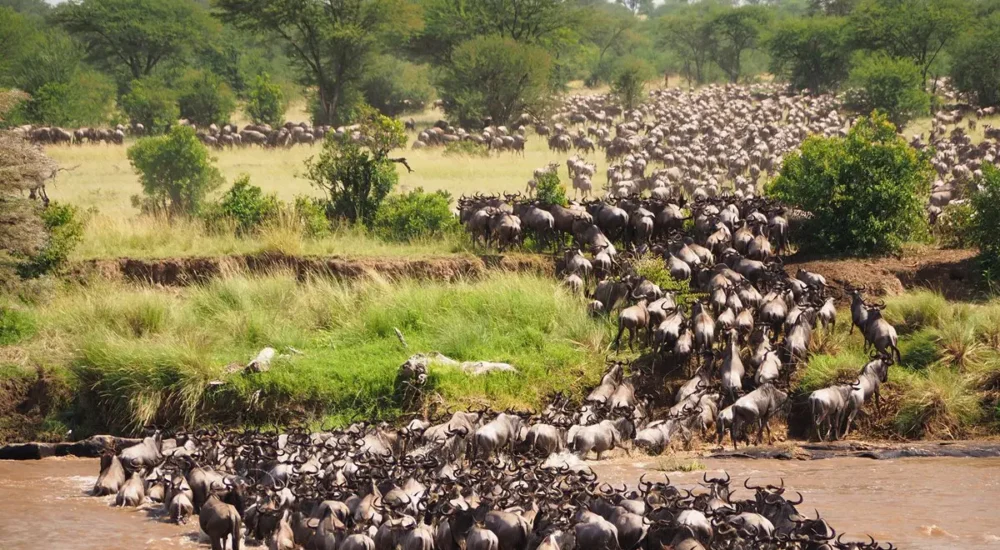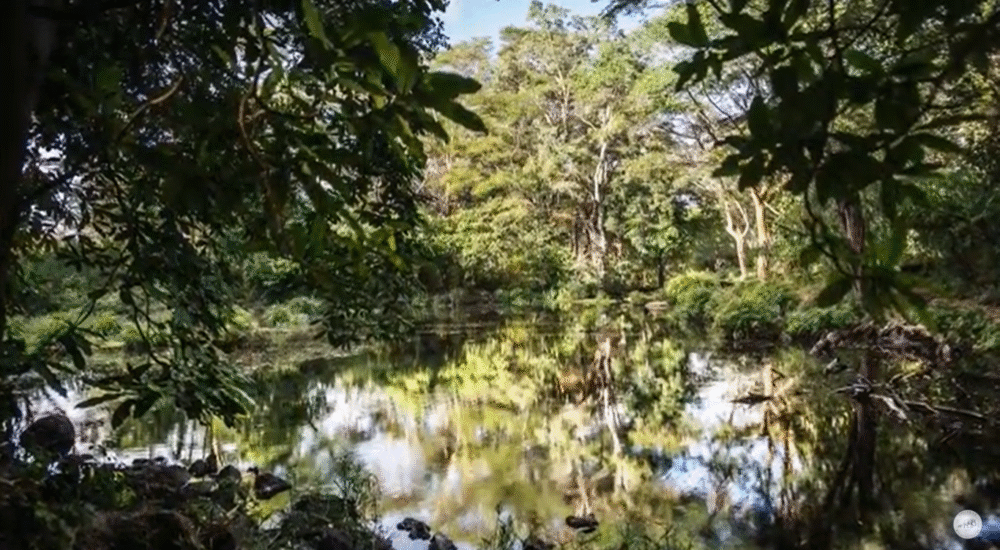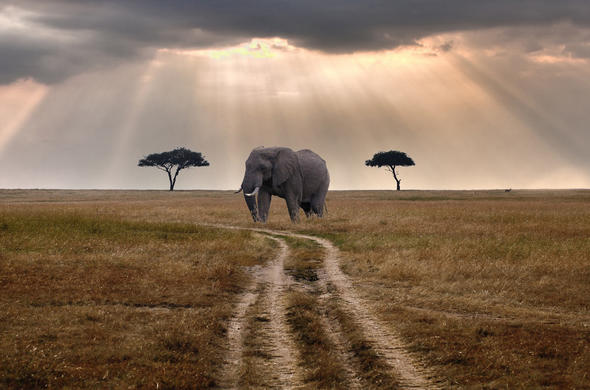Tanzania is home to two of the most iconic and sought-after experiences for nature enthusiasts…
AJAI WILDLIFE RESERVE
Ajai Wildlife Reserve is located on the western banks of the Nile in north-eastern Uganda (Arua District). The reserve attracted international prominence when former American President Theodore Roosevelt came on a hunting vacation in 1910. The Ajai Wildlife Reserve is situated at a higher height but is very small (166 sq km). The reserve is distinguished by a conspicuous island surrounded by Savannah and wetlands. The rivers Acha and Ala feed this seasonal marsh. During the rainy season, the swamp entirely floods, sealing the island isolated from the rest of the world. This explains why animals continue to thrive on the island despite the presence of a rising human population.
The reserve began as a sanctuary during colonial times and was placed under the care of a prominent local leader named Ajai. In 1937, Ajai proclaimed the region a protected zone and enacted strict restrictions to prevent poaching and expansion on the island. Following his death in 1965, the refuge was transformed into a wildlife reserve with the primary goal of saving rhinos.
The Ajai Wildlife Reserve in Uganda is mostly made up of woods, Savannah plains, and wetlands. The tourism potential of Ajai Wildlife Reserve is enormous. Black and white Colobus monkeys, black cobras, red monkeys, buffaloes, civets, bushbuck, the Common Duiker, puff adders, zebras, pythons, foxes, Vervet Monkeys, green snakes, Leopards, Sitatunga, Oribi, hartebeest, hippopotamuses, Dik Dik, Monitor lizards, Olive baboons.![]()
Ajai Game Reserve in Uganda is an excellent birding site. The wetlands and forests provide ideal habitat for a wide variety of bird species, including Marabou Stocks, weaver birds, African Fish Eagles, and Grey Crowned cranes.
What happened to the Rhinos in Ajai Wildlife Reserve?
Both black and white rhinos were abundant in Uganda’s bush. When Ajai took over management of the Sanctuary for the colonial administration, the reserve housed almost 80% of Uganda’s rhino population at one point. Following independence, an increasing number of people encroached on the reserve for grazing and farming. Poachers killed down animals in the reserve for sustenance as the human population surrounding the reserve grew. When they learned the worth of rhino horns, they turned on the.![]()
Poaching from South Sudan expanded to Uganda, causing issues for rhinos in Ajai. Rhino horns were precious, and there was a network of purchasers willing to pay top dollar for them. Rhinos were simple to poach since they do not detect danger like other larger species. Poachers found it simple to approach rhinos, and within a few years, their numbers had increased dramatically, catching the attention of environmentalists all over the world.
The second important reason for increased poaching, as previously stated, was the rising human population, which began to put pressure on the once secluded reserve. Things became worse as the road conditions to the reserve improved. With so many humans living so near to the reserve, managing the park and combating poaching became extremely challenging. The World Wildlife Fund established an office within the reserve to combat poaching through community engagement and even financial incentives. This was insufficient to prevent the extinction of White Rhinos.
By the 1970s, the entire number of white rhinos in the reserve and throughout Uganda had declined dramatically. When Tanzanian forces ousted Idi Amin from power, his rogue soldiers hunted down the last rhinos for their horns. Rhino populations have dropped to record lows. Under the tight supervision of the government and allies, the final rhinos were relocated from Ajai Wildlife Reserve and transported to the Ziwa Rhino Sanctuary and a wildlife ranch in Nakasongola.
Challenges and the way forward for Ajai Game Reserve
Reserve land invasion Poaching for animals is still practiced, but on a small scale. The Uganda Wildlife Authority and Uganda Wildlife Safaris have agreed to a new management agreement for the reserve (a tour company). According to the terms of the new deal, Uganda Wildlife Safaris would transform the reserve into a premier tourist destination by constructing superior accommodations, roads, trails, and an airstrip. In addition to boat rides, nature walks, birding, photography tours, fishing, and general animal viewing, Uganda Wildlife Safaris offers sport hunting in the reserve. The Uganda Wildlife Authority is in charge of providing security and general monitoring.
Things have been sluggish and have not gone as planned. One reason for the delay in converting the reserve into a more appealing location is the failure to refill it with Rhinos as anticipated. Significant financial investments are required, as well as strong leadership. Furthermore, the safety of rhinos and other species must be ensured. It is expected that an electric fence surrounding the reserve will cost roughly $10 million to prevent the animals from intruding into human farms. The delay in reintroducing the rhinos has had an impact on tourism in the reserve, as well as the loss of vital support from local communities and their leaders.
Communities near the reserve and its leaders feel that reintroducing rhinos by the government will restore the area’s status and attract more tourists, with accompanying advantages. Residents do not cherish the present fauna in the reserve since it does not draw enough tourists. Some even argue that if the government cannot bring the rhinos back, the reserve should be used for agricultural.
However, the Uganda Wildlife Authority is taking its time reintroducing the Rhinos for concern that poachers may endanger their lives. They have not forgotten what certain residents of the surrounding town did to the Rhinos in the past. Before bringing the rhinos back, the reserve must be secured.
While stakeholders await government action on refilling the reserve with rhinos, sport hunting is prospering, with Sitatunga, Uganda Kob, Waterbucks, and other antelopes being popular targets. Reintroducing white rhinos while demonstrating Uganda’s commitment to wildlife protection for future generations. The reintroduction of rhinos into the reserve will indirectly contribute to the protection of other vulnerable species in the reserve. Some 22 square kilometers of reserve land were recently converted into a refugee camp, with the remainder distributed according to the expanding population.
Additional Information about Ajai game reserve
Ajai Wildlife Reserve may be reached by car in 6 hours. Tourists can also arrange for a chartered aircraft from Kampala to the nearby Arua Airstrip.
Within the reserve, there are just tented facilities. Visitors who want more comfortable accommodations must arrange with a hotel in Gulu or Arua before going on activities in the reserve early in the morning. Another option is to stay in a hotel in Murchison Falls National Park before heading to the reserve for activities.
The Ajai Wildlife Reserve is available all year, however the ideal time to come is during the dry seasons. The dry seasons last from December to March and from June to October. The remaining months are classified as rainy seasons.
Nature walks or safari vehicles may take you directly into the heart of the reserve to witness the wildlife.


